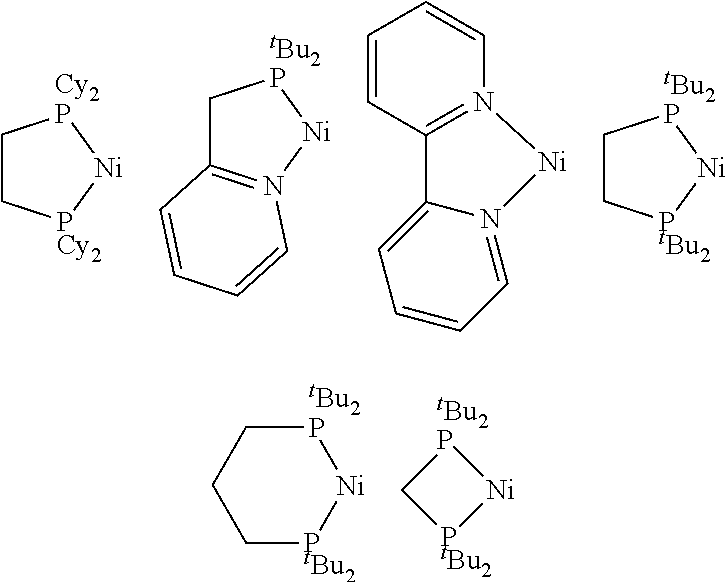Methods for the production of α,β-unsaturated carboxylic acids and salts thereof
a technology of unsaturated carboxylic acid and production method, which is applied in the preparation of carboxylic compounds, organic compound/hydride/coordination complex catalysts, physical/chemical process catalysts, etc., can solve the problems of difficult isolation of desired ,-unsaturated carboxylic acid (e.g., acrylic acid), and poor yield, so as to achieve easy separation/isolation procedures, high yield, and high yield
- Summary
- Abstract
- Description
- Claims
- Application Information
AI Technical Summary
Benefits of technology
Problems solved by technology
Method used
Image
Examples
examples
[0114]The invention is further illustrated by the following examples, which are not to be construed in any way as imposing limitations to the scope of this invention. Various other aspects, embodiments, modifications, and equivalents thereof which, after reading the description herein, may suggest themselves to one of ordinary skill in the art without departing from the spirit of the present invention or the scope of the appended claims.
[0115]The following nickelalactone complexes, which can be derived from CO2—ethylene coupling, were used to evaluate various homogeneous and heterogeneous (solid) promoters in the examples that follow.
[0116]
[0117]The general nickelalactone elimination reaction was performed as follows. A flask was charged with 10 mg of nickelalactone (A, B, or C), promoter, and approximately 10 mL of diluent. The reaction mixture was heated with vigorous stirring on an oil bath under conditions described in the examples below. The reaction mixture was allowed to cool...
examples 1-8
Evaluation of Homogeneous Activators / Promoters
Acrylate Elimination
[0118]For Examples 1-8, 5 equivalents of the activator / promoter (per Ni) were incubated with the nickelalactone (A, B, or C) at 50° C. for 3 hours, followed by eventual acid hydrolysis and extraction to quantify the amount of acrylic acid by 1H NMR against an internal standard, as reflected in the following reaction scheme:
[0119]
[0120]The results of the evaluation of the homogeneous activators / promoters are summarized in Table I. The diluents employed in Example 1 and Examples 2-7 were 5:1 tetrahydrofuran / acetone and tetrahydrofuran, respectively. Example 8 was investigated in tetrahydrofuran, methanol, and acetone. The homogeneous promoter of Example 5 was a solution of methylaluminoxane in toluene, while the homogeneous promoter of Example 6 was a mixture of Mg(nBu)2 and methanol, which results in an alkoxide. As shown in Table I, the homogeneous activators / promoters of Examples 1-8 failed to yield any acrylic acid ...
examples 9-12
Evaluation of Solid / Heterogeneous Activators / Promoters
Acrylate Elimination
[0122]Examples 9-12 were performed in a manner similar to that of Examples 2-7, as reflected in the following reaction scheme (25 equivalents per Ni were based on site concentration (mmol / g) of the solid activator / promoter; HCl was used to liberate the acrylic acid for analysis):
[0123]
[0124]The results of the evaluation of the solid / heterogeneous activators / promoters (calcined at 400° C.) are summarized in Table II. Unexpectedly, in contrast with the homogeneous Al and Mg promoters of Examples 2-3, 5-6, and 8, the solid promoters of Examples 9-12 produced a measurable amount of acrylic acid. More surprisingly, Example 11A and 11C (zirconia) and Example 12A and 12C (magnesia) provided significant molar yields of acrylic acid (from 20% to 90%).
[0125]
TABLE IIMolar Yields of Examples 9-12.Site conc.ExamplePromoter(mmol / g)ABC9alumina5.4 001110silica-magnesia5.3Trace0011zirconia1.32302312magnesia1.188658
PUM
| Property | Measurement | Unit |
|---|---|---|
| temperatures | aaaaa | aaaaa |
| temperatures | aaaaa | aaaaa |
| temperatures | aaaaa | aaaaa |
Abstract
Description
Claims
Application Information
 Login to View More
Login to View More - R&D
- Intellectual Property
- Life Sciences
- Materials
- Tech Scout
- Unparalleled Data Quality
- Higher Quality Content
- 60% Fewer Hallucinations
Browse by: Latest US Patents, China's latest patents, Technical Efficacy Thesaurus, Application Domain, Technology Topic, Popular Technical Reports.
© 2025 PatSnap. All rights reserved.Legal|Privacy policy|Modern Slavery Act Transparency Statement|Sitemap|About US| Contact US: help@patsnap.com



